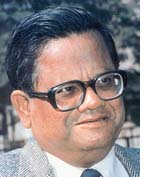Hyderabad: Alternative to antibiotics found
Scientists identity anti-microbial protein in milk. The protein was found in the milk of mammals like Echidna which are found only in Australia and New Guinea. Hyderabad: A novel anti-microbial protein
Scientists identity anti-microbial protein in milk. The protein was found in the milk of mammals like Echidna which are found only in Australia and New Guinea. Hyderabad: A novel anti-microbial protein
NEW DELHI: The Council of Scientific and Industrial Research on Monday launched a new initiative to develop low cost drugs for infectious diseases like tuberculosis that afflict mainly the poor in India and other developing countries. Big pharmaceutical companies do not spare much resources for these for want of adequate returns. The initiative is in the form of a web portal, which would provide a platform for researchers in the academia, industry and institutes across the world to share their knowledge and ideas and conduct collaborative research on a voluntary basis.
In a path-breaking initiative that has the potential to revolutionalise the drug manufacturing sector, the Council of Scientific and Industrial Research (CSIR) on Monday launched its Open Source Drug Discovery (OSDD) programme with the aim of finding a cheap medicine for tuberculosis. The main objective of the initiative is to produce effective and cheap drugs for diseases like tuberculosis and malaria, which mainly afflict people in developing countries like India, through an alternative process that cannot be patented.
BHUBANESWAR: The State Government today constituted a coastal engineering cell to monitor the massive erosion taking place along the Orissa coast and suggest measures to protect the coast in consulation with expert groups. The issue was discussed at an offical-level meeting today chaired by Development Commissioner RN Bohidar and it was decided that the coastal engineering cell will be headed by a superintending engineer.
An Indian database has been created by profiling the population on the basis of changes in genes with disease linkages. THE first results from the project of the Indian Genome Variation Consortium (IGVC) have clearly demonstrated (Frontline, June 6) that even as the Indian population exhibits a genetic diversity unmatched anywhere in the world, there are within it pockets of homogeneous ethnic groups that have remained relatively genetically unadmixed. (The IGVC's multi-institutional project was set up to evolve a disease-linked genetic map of India.)
A novel scheme is being implemented to rid villagers of polluted drinking water in the rural areas of Madhya Pradesh. Under this scheme, now the villagers would be able to test purity of water in just Re 1. The test would be conducted by trained members of Gram Panchayats. They are being imparted specialised training in this connection. Amount to be incurred on water testing would be mobilised through public participation.
THE public-private partnership model is now catching up in the drug R&D as well. In a first-ofits-kind partnership, the Rs 3,000-crore Nicholas Piramal Group on Friday signed an agreement with department of biotechnology (DBT) to jointly screen for biomolecules from microbes. The project cost is Rs 25 crore, of which Rs 17.98 crore will be contributed by DBT and Rs 6.88 crore by Nicholas Piramal. About 7,000 isolates per month will be collected and sent to Nicholas for screening, which will amount to 2 lakh molecules in three years. Joint collection will be done by nine institutes under DST such as National Environmental Engineering Research Institute, National Centre for Cell Science, Institute of Genomics and Integrative Biology, National Institute of Oceanography, etc. This is the first project in which industry and academia will work together to screen such a large number of bacterial isolates. The screening will be done for anti-cancer, anti-infective, anti-diabetes and anti-inflammation properties. In addition to culture-dependent method, culture-independent approach will be adopted for a few samples. "The global antibiotic market is worth $25 billion and there's an immense opportunity to increase the share of patents through the discovery of newer molecules. The partnership will eventually help us develop cheaper drugs,' said Union minister for science & technology Kapil Sibal.
A group of scientists of the North-East Institute of Science and Technology (NEISC), formerly known as Regional Research Laboratory (RRL), Jorhat, has prepared a safe mosquito repellent in the form of Agarbatti or incense sticks from a harmless bio-product. Most of mosquito repellents currently used for domestic purpose are mainly synthetic products with high mammalian toxicity. They are mostly synthetic pyrethroids. Though they are less harmful then general insecticides, but still are not totally safe for prolonged use, sources said.

A P MITRA (1927-2007) In the early 1990s, the US Environmental Protection Agency had come out with a report incriminating Indian rice fields of emitting 38.6 million tonnes of methane per year and
<i> Current policies belie avowed focus on Plant Earth</i> <br> <br> The 94<sup>th</sup> Indian Science Congress's focal theme stressed protection of the Earth from environmental degradation, natural and human-made disasters and the perils of pollution. But is the Indian science establishment geared to tackle such issues. Is it even interested? A look at how the Union ministry of science and technology disburses money compels an answer in the negative:<br>